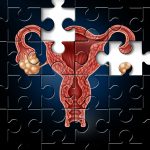Notes from the Field: September, 2019
Nature Cure Clinical Pearls
Jared L. Zeff, ND, VNMI, LAc
The following is a not an article prepared for a medical journal. Not every statement of fact is cited or referenced. This is a commentary on the medicine, a running set of observations about practice in the field. It’s not meant to be a peer-reviewed presentation; rather, these are notes and thoughts from a practicing naturopathic physician, a primary care doc in general practice.
Cardiovascular Disease
Cardiovascular disease (CVD) remains the leading cause of death in North America, though cancer is a close second. Principle among the causes of such death is atherosclerotic plaquing, which impedes blood flow and precipitates ischemia. The Framingham Study, begun in 1948, remains a long-running study to prospectively investigate the epidemiology and risk factors for CVD. One of the initial findings, reported in the 1960s, demonstrated a link between high serum lipids – especially cholesterol – and the development of atherosclerotic plaque. It appeared as though high levels of serum cholesterol correlated with high incidence of plaquing.
This correlation began an effort to proactively reduce cholesterol levels to reduce the risk of developing CVD. By the end of the 1970s, Merck Pharmaceutical had patented the Japanese discovery of a natural substance that could reduce cholesterol levels in the blood by interfering with the HMG-CoA reductase enzyme in the liver that is a key part of the metabolic pathway resulting in the production of cholesterol. The first drugs designed to inhibit HMG-CoA reductase were studied, and they demonstrated success in this reduction, but also problems. News of the discovery spread through the medical community, as did rumors linking the statin to tumors, muscle deterioration, and sometimes death in laboratory dogs. Test animals died, and there seemed to be a problem with muscle metabolism. Doctors were wary, and Merck had a problem selling the concept of statin efficacy. But these drugs very effectively reduced serum cholesterol and other serum lipids. Merck as well as other drug companies generated studies that demonstrated the efficacy of statins in reducing a second heart attack in middle-aged men. Resistance was overcome, and statins became a routine part of medical care. The big question regarding statins was whether they could aid in primary prevention, not just secondary prevention.
A Case of CVD
Many years ago, I heard John McDougall, MD, give a talk at an AANP conference, or perhaps it was a NWNPA conference. He was reporting upon research and his experience in reversing atherosclerotic plaquing through diet and graded exercise. Shortly after this conference, a man came to see me who had been told that he urgently needed a coronary bypass surgery. He was 46 years old and suffering from GERD and chest pain. Angiography demonstrated arterial constriction. His exercise tolerance had tanked; he could not play basketball, and because of the chest pain he could no longer run – his preferred methods of exercise.
I approached him in my usual fashion, taking a detailed history, doing a physical examination with naturopathic and functional additions, and so forth. I advised him to eliminate potato from his diet (based on old Doc Carroll’s method of dietary evaluation), started him with daily hydrotherapy, gave him a bitter tonic (Gentiana and Scutellaria) with meals, put him on fish oil, and gave him a cardiotonic containing Cactus and Crataegus, 10 drops in a little water with meals. I also had him take Thyroidinum 12X each morning, based on his low temperature, fatigue, and positive response to the remedy in my office. I advised him to begin a graded exercise program that included walking, but to stop if any chest pain occurred. He was to call me if anything seemed amiss, or if chest pain increased.
I saw him 1 month later. The GERD symptoms were gone. He had had no chest pain and reported feeling “younger.” After 2 months he could play basketball with no chest pain, but his heartburn had returned somewhat. I added some Althea, Avena, and Hydrastis to his herbal digestive formula, and the heartburn ceased.
He continued on this regimen with no difficulty, reporting after 6 months that he could get his heart rate up to 135 beats per minute with no pain, but that above 145 bpm pain would begin. He was now lightly jogging 2 miles daily, playing basketball, and feeling great. His cardiologist wanted to test him again, worried about his lack of compliance. He made the appointment, and his wife wrote me a letter with the result: “The cardiologist could find nothing wrong with Bill’s heart! His stress test got up to 165 beats per minute with no sign of angina. The cardiologist was shocked. He wants to know everything Bill is doing.”
I see this patient annually. He continues to run with no chest pain. It has been over 2 decades now. He remains healthy, and says he continues to feel “better than ever,” unless, of course, he eats some potatoes.
Statins and CVD
Statins are among the most commonly prescribed drugs in North America, generally among the top 3. They are now used as primary prevention since the JUPITER trial, published in November 2008 by the New England Journal of Medicine.1 Part of the title of a follow-up JUPITER study has always caused me to chuckle: “Justification for the Use of Statins in Prevention: an Intervention Trial Evaluating Rosuvastatin (JUPITER).”2 It seemed odd to me to name a study a “justification.” The relative comparative results of this study showed a nearly 50% improvement in outcomes of CVD for the study group. In the first 2 years of the study, 142 first major cardiovascular events had occurred in the study group, as opposed to 251 in the placebo group. Headlines appeared in the popular press reporting that statins reduced the incidence of heart attacks by nearly 50%!
Upon careful analysis, however, the absolute results showed a substantially smaller difference between the study group and the placebo group. There were 17 802 participants in the study. The absolute difference between these groups was actually about 0.06%. Approximately 0.02% of the intervention group experienced coronary events, out of a cohort of roughly 8900, and about 0.03% of the similarly-sized placebo cohort had events. Thus, there was hardly any real difference between the groups. Interesting, how statistics can be jiggered. But on the basis of this study, a major question about the use of statins was “resolved.” Yes, statins could and should be used for primary prevention, they said, and the justification for using statins in people who have not had a prior CV event was now settled. Statins became the “standard of care,” such that I have had a number of patients who have been badgered by their primary care physicians to take these drugs, literally being called on the phone and urged to do this.
Another Case
One of the most interesting such cases was a young man, age 35, who is a high-level accountant at a major company. He presented with fatigue, erectile dysfunction (ED), leg pain, and mental fog. Up until recently he had been running 3 miles daily, but could no longer run because of his leg pain. He was having trouble at work because he couldn’t remember things like he used to. His mind was no longer “sharp.” The ED was disconcerting to both him and his wife. And all this had started over the previous 3 months. As I took his case, he noted that his conventional physician insisted he go on a statin and a blood pressure (BP) medication because his father had a “triple bypass.” His BP had been 135/85 mm Hg, and was lowered to 105/65 by the drugs, and his total cholesterol had been 205 mg/dL, and was lowered to 140 by the statin. He father had been a smoker and did not exercise.
I pointed out to my patient that he had only 1 of the risk factors that his father had – his family history – but that one of his major advantages, his daily run, was gone, which was likely due to the statin. His inability to perform his job as he had been, as well as his ED, was also most likely due to the drugs. I suggested a trial of being off the drugs, with some close monitoring of his blood pressure.
When I saw him 1 month later, all of his symptoms had resolved. He reported this to his doctor, who strongly insisted that he go back on the statin and the anti-hypertensive. The patient wanted my advice. I pointed out to him that his BP was within the normal range and that his cholesterol was not dangerous, in my opinion, and that he was running again, had great energy, was thinking clearly again, and that his erectile dysfunction was no longer dysfunctioning. But the insistence of his doctor was weighing on him, concerned that he was putting himself at risk for a heart attack or stroke. He decided to go back on the statin and the BP medicine.
In 2006, Alastair Dobbin, MD, wrote a letter to the New Scientist.3 I will excerpt a bit of it here:
As a medical general practitioner, I am receiving more and more stringent guidelines on prescribing statins based on nothing but drug company literature (7 October, p 46). The cost of lipid-regulating drugs in England was £600 million for the past year, or 8 per cent of the total primary care drug spend … A summary of the evidence on statin use by leading epidemiologists in Germany, published in the drugs bulletin Arznei-telegramm in June 2004, concluded that no life expectancy increase has been demonstrated through the use of statins in primary prevention; women and people over 70 do not appear to benefit from statins for primary prevention; and the latter may be harmed by an increased cancer risk.
I did a little exercise: Using CDC statistics, I made a chart of the number of people who had died from CVD throughout the 20th century, year by year. The line was fairly constant, until the late 60s, when the anti-smoking crusade began in earnest, when it dipped a bit. Statins were introduced in the 70s, and after the JUPITER study, their use substantially increased. But if you track the numbers, you see no dip in the percentage of CVD deaths after this point. One would expect that, as statin use increases, the number of people dying from CVD would decrease. But it does not, at least not that I can tell. I am not alone in this observation.
In June 2019, Bezin et al published an article in the American Journal of Medicine entitled “Real Life Benefits for Statins for Cardiovascular Prevention for Elderly Subjects: A Population-Based Cohort Study.”4 Their conclusion was that “[s]tatin treatment was not associated with a reduction in acute coronary syndrome or all-cause death in elderly…”
And in January 2019, Li et al reported on 16 randomized controlled trials including over 69 000 participants, published in BioMed Research International. Their conclusion was that “[s]tatins… have no effect on CHD death and all-cause mortality.”5
So why are statins so adamantly prescribed? I think that part of it is that they work so well. That is, if you assume that cholesterol causes CVD, you can compare lab reports after 1 month on statins and often see a 50% reduction in serum lipid levels. Wow! you think. This really works. It is very satisfying to see something like that. You give a drug and down come the numbers. Success!
But what is really happening?
Inflammation
We know that the problem is not serum lipids, not really. It’s certainly not total cholesterol. The cholesterol pool is necessary for CNS repair, among other things. This is why some people report memory loss on statins. The problem in CVD is not really elevated lipids, but inflammation. It is inflammation that drives the production of cholesterol, which is, in part, a repair agent. By lowering toxemia through dietary correction, an underlying cause of inflammation is reduced and the body can successfully continue its repair efforts. It will even resolve the plaquing. McDougall saw this, and I see it. The key is reducing the inflammation.
A Final Case of CVD
I saw this in another patient – a man in his late 50s who was told he needed an emergency bypass surgery. He was in constant chest pain, with nitroglycerin patches in place and taking oral nitrates. He was also taking aspirin, a beta-blocker, an anti-hypertensive, a statin, and gabapentin. He had to quit his job due to the chest pain and the weakness and debility that accompanied it, but was refusing the surgery. The patient was from Eastern Europe, and he told his doctor that people often died in the hospital undergoing this surgery. The doctor assured him that this did not happen in America, but he was still afraid.
He asked me to treat him. I told him to get the surgery. He was adamant that he would not, so I told him I would treat him on 2 conditions: 1) he must do exactly what I told him to do; and 2) I would continue treating him as long as we saw progress. I began by giving him a dose of Cactus 200C in the office, and the chest pain eased. Progress begins. I sent him home with Cactus 6C, to take 3 times daily, along with a vial of 200C to take for acute pain episodes. I had him start a tincture of Crataegus and Cactus (2:1), 30 drops with meals. I gave him a dietary recommendation based on Carroll’s method, and started him on daily constitutional hydrotherapy in my office.
His chest pains were intermittent by the end of the week, and their duration continued to reduce after that, from 1-2 hours to a couple of minutes. As his BP decreased, I reduced his medications. After about 5 weeks he was able to return to work. He continued to improve, until the chest pains were rare, and then gone. Finally, after 4 months, he asked his cardiologist to repeat the angiogram. She agreed, but only if he would agree to the surgery once she demonstrated its necessity. He did. The angiogram revealed that 2 of the 3 blockages were completely resolved, and that the largest one was now open by 50%. She was astonished. She said that this was “a miracle,” and attributed it to the statin (which he had ceased), while also stating that “statins don’t do this.”
Conclusion
Our simple medicine is powerful. We can treat CVD effectively in many cases. Some patients need to be in the hospital; some patients need surgery. Some cases are difficult, and we are simple physicians, not gods; we can’t and don’t help everyone. But we get to see miracles, often on a daily basis. I love this medicine and feel privileged to participate in it, to go to my clinic daily, to ease pain and fear, to increase hope, to ease suffering.
Respectfully,
Jared L. Zeff, ND, VNMI, LAc
References:
- Ridker PM, Danielson E, Fonseca FA, et al. Rosuvastatin to prevent vascular events in men and women with elevated C-reactive protein. N Engl J Med. 2008;359(21):2195-2207.
- Everett BM, Glynn RJ, MacFadyen JG, Ridker PM. Rosuvastatin in the prevention of stroke among men and women with elevated levels of C-reactive protein: justification for the Use of Statins in Prevention: an Intervention Trial Evaluating Rosuvastatin (JUPITER). Circulation. 2010;121(1):143-150.
- Dobbin A. Statin statistics. November 1, 2006. New Scientist Web site. https://www.newscientist.com/letter/mg19225760-400-statin-statistics/. Accessed September 10, 2019.
- Bezin J, Moore N, Mansiaux Y, et al. Real-Life Benefits of Statins for Cardiovascular Prevention in Elderly Subjects: A Population-Based Cohort Study. Am J Med. 2019;132(6):740-748.e7.
- Li M, Wang X, Li X, et al. Statins for the Primary Prevention of Coronary Heart Disease. Biomed Res Int. 2019;2019:4870350.
 Jared L. Zeff, ND, VNMI, LAc, is a licensed doctor of naturopathic medicine and a licensed acupuncturist. In addition to functioning as Medical Director at the Salmon Creek Naturopathic Clinic in Vancouver, WA, Dr Zeff teaches on the faculty at National University of Natural Medicine in Portland, OR, where he was also Dean from 1988 to 1993, and holds a professorship in Naturopathic Medicine. Dr Zeff is a graduate of the University of California, NCNM, and the Emperor’s College of Traditional Oriental Medicine. He, along with Pamela Snider, is the author of the AANP’s Definition of Naturopathic Medicine, and the Therapeutic Order concept.
Jared L. Zeff, ND, VNMI, LAc, is a licensed doctor of naturopathic medicine and a licensed acupuncturist. In addition to functioning as Medical Director at the Salmon Creek Naturopathic Clinic in Vancouver, WA, Dr Zeff teaches on the faculty at National University of Natural Medicine in Portland, OR, where he was also Dean from 1988 to 1993, and holds a professorship in Naturopathic Medicine. Dr Zeff is a graduate of the University of California, NCNM, and the Emperor’s College of Traditional Oriental Medicine. He, along with Pamela Snider, is the author of the AANP’s Definition of Naturopathic Medicine, and the Therapeutic Order concept.










